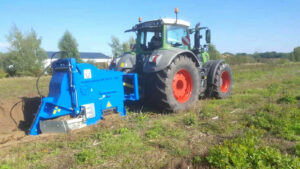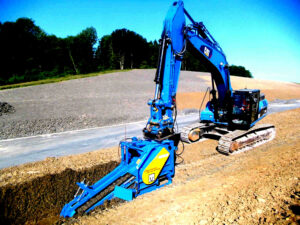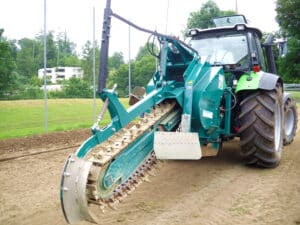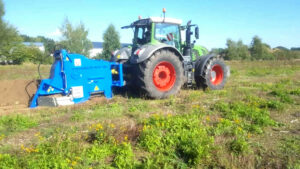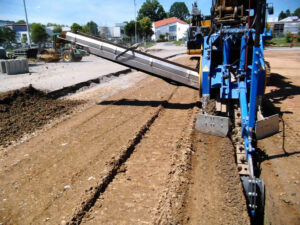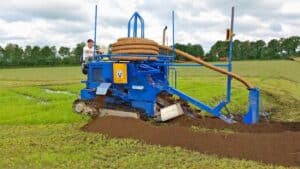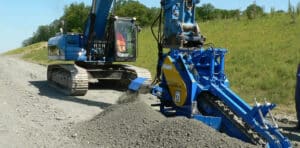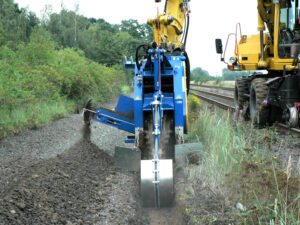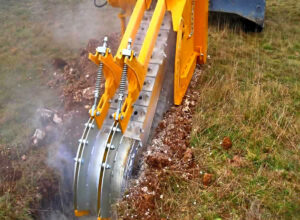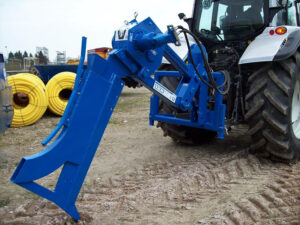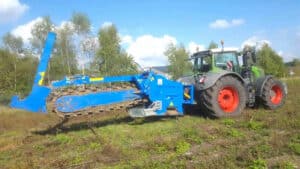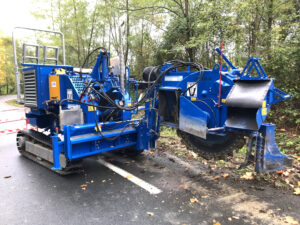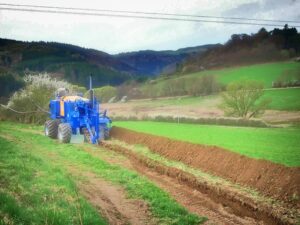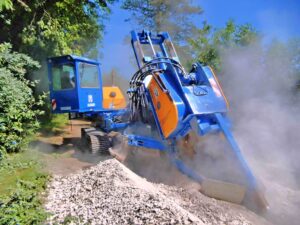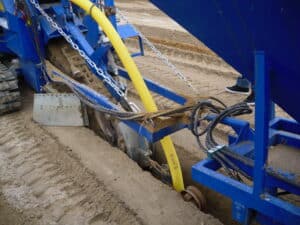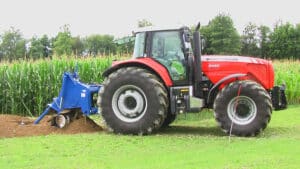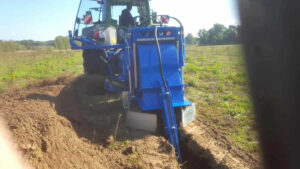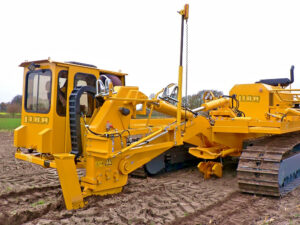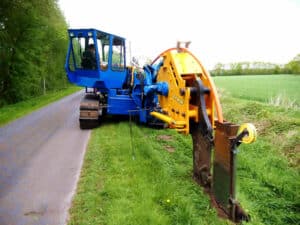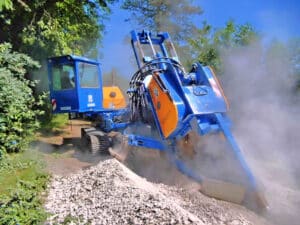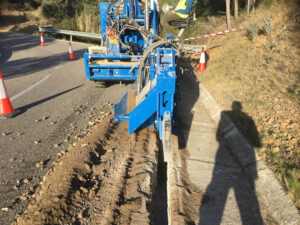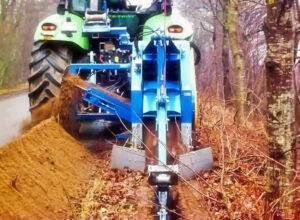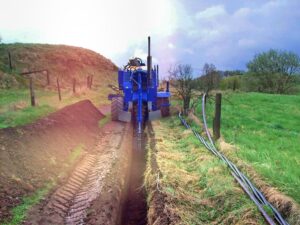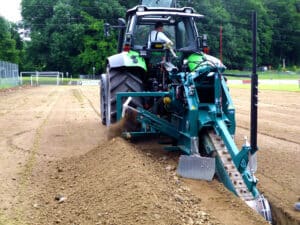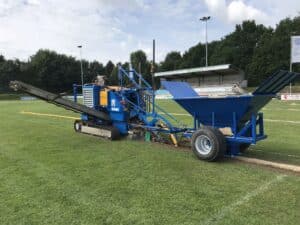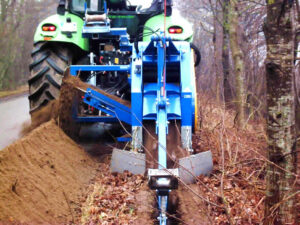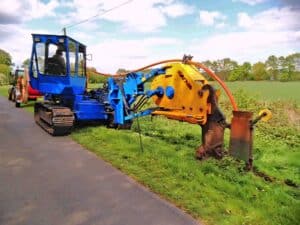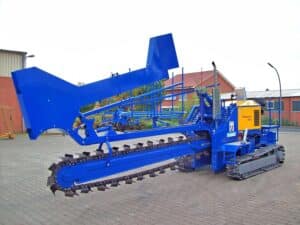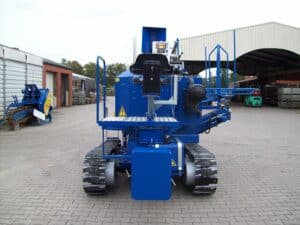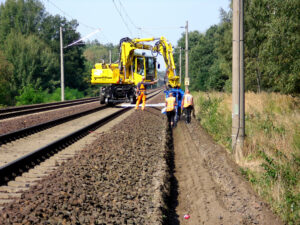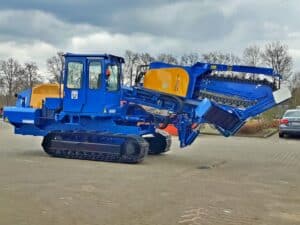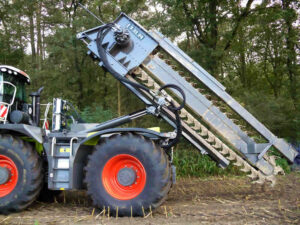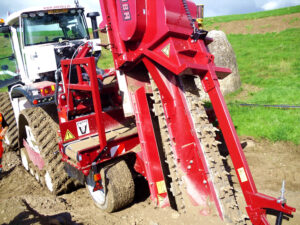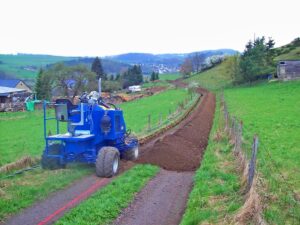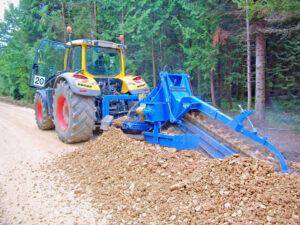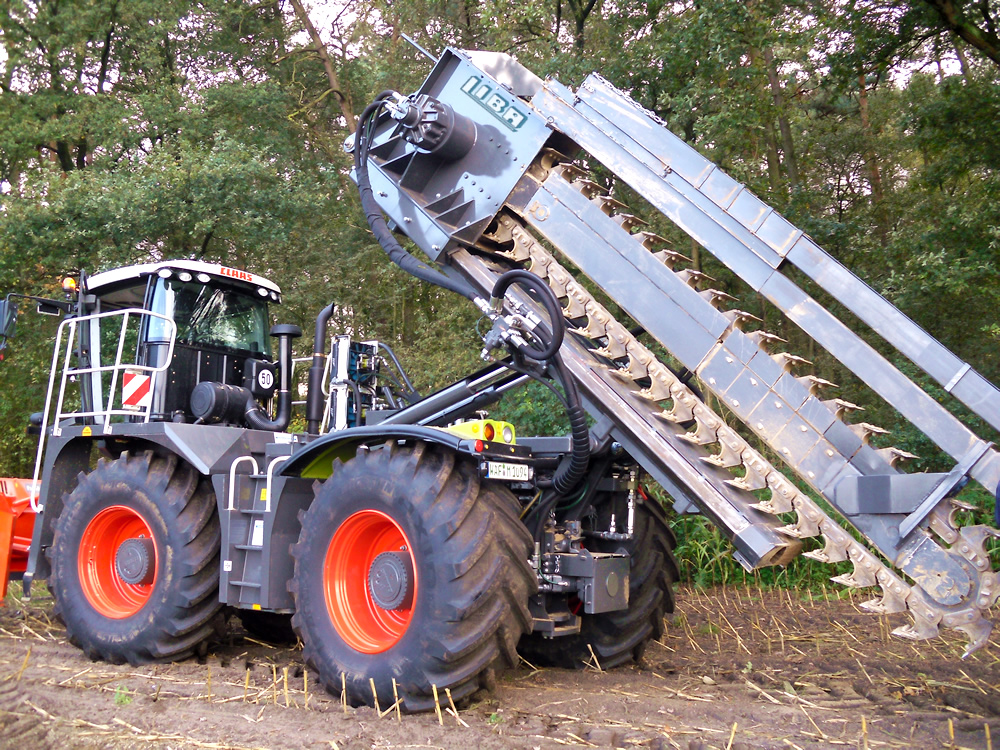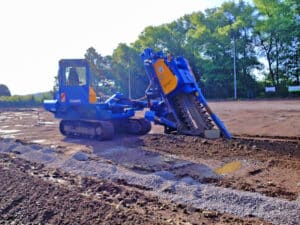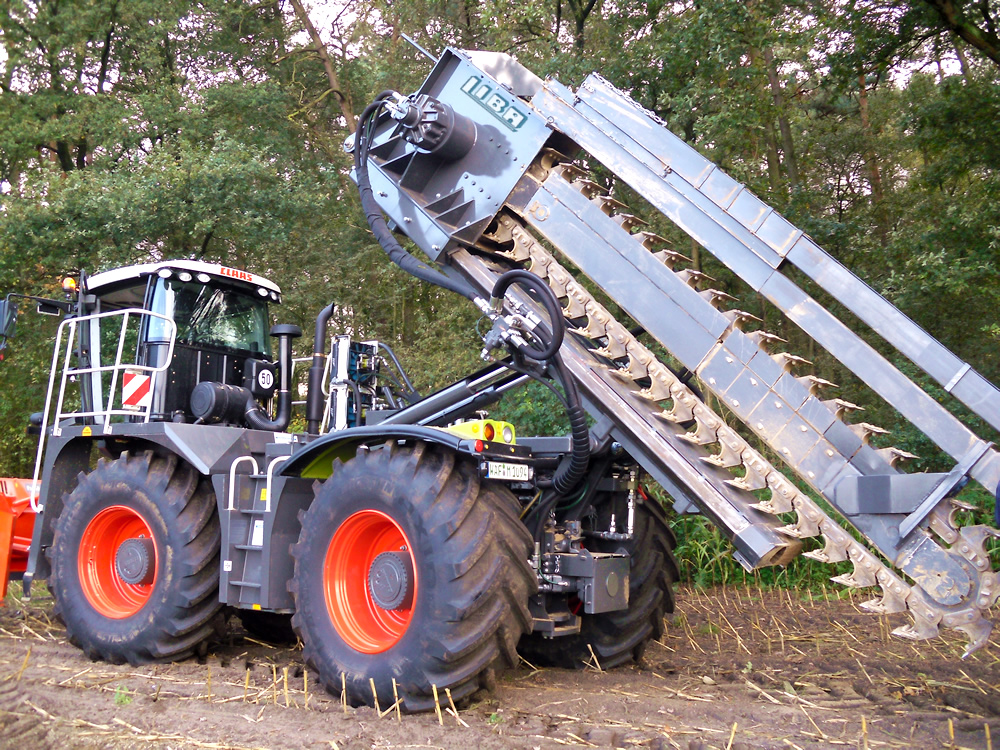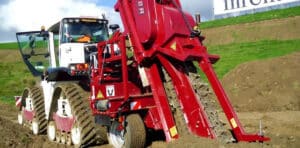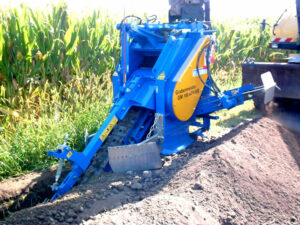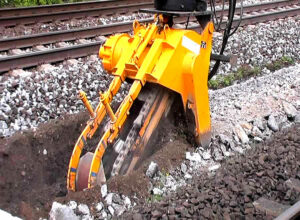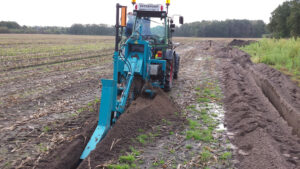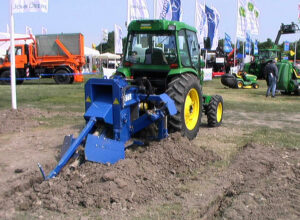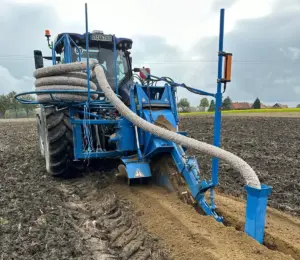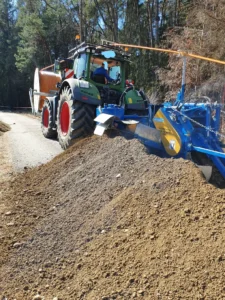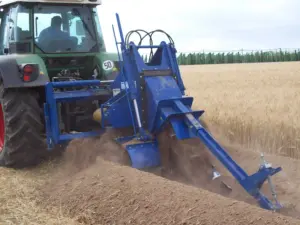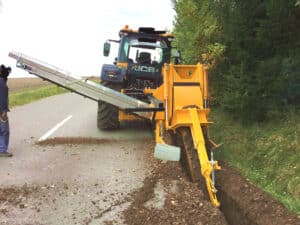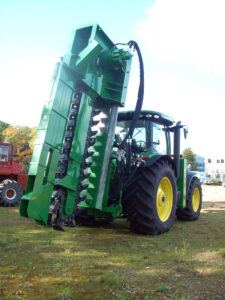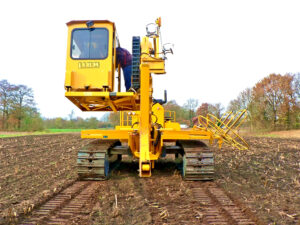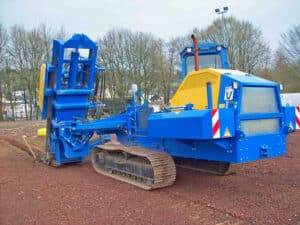There are several alternative methods for digging trenches, such as excavators or manual labor. The choice of method depends on factors such as project scope, soil characteristics, and efficiency. However, trenchers usually offer a faster and more precise solution.
Yes, the use of trenchers may be subject to certain environmental regulations. The exact regulations may vary depending on the location and type of construction project. Some common environmental requirements may include:
- Protection of Nature Preserves: Special restrictions on trenching may apply near conservation areas to protect the environment and wildlife.
- Water protection: The trench excavation must not cause pollution in the vicinity of water bodies and groundwater sources.
- Disposal of soil material: The removed soil material must be properly disposed of or recycled to minimize environmental impacts.
Important information:
- Environmental requirements may vary by location and construction project.
- Nature reserves must be protected.
- Soil material must be handled in an environmentally sound manner.
Yes, trenchers can also be used in urban areas. There are special models designed for use in confined spaces and near buildings. Nevertheless, any noise restrictions or limitations due to local conditions must be taken into account.
Operating a trencher usually requires some training and experience. It is important to follow the manufacturer’s operating instructions and to familiarize yourself with the specific controls and safety precautions. Proper instruction on the machine is essential to ensure that it is operated efficiently and safely.
Yes, trenchers are also suitable for digging drainage ditches. They can efficiently loosen the soil and create the necessary depth and width for drainage systems. This is a common application for trenchers.
Yes, some trenchers can be equipped with various attachments and thus be used for other tasks as well. Examples of alternative uses include:
- Soil loosening: The trencher can be used for soil loosening in agricultural areas.
- Asphalt cutters: With special attachments, trenchers can also be used to remove asphalt.
- Landscaping: In landscaping, trenchers can be used in the preparation of the soil.
Important information:
- Trenchers can be used in a variety of ways with different attachments.
- Soil loosening, asphalt milling and landscaping are alternative applications.
In conclusion, the trencher is an extremely useful and versatile construction tool that is indispensable in the construction and road building industry. Through proper selection of the milling machine, environmentally conscious use, proper training of personnel and regular maintenance, construction projects can be carried out efficiently and safely. The trencher thus makes a significant contribution to shortening construction times and improving the quality of trench excavations.
Using a trencher in bad weather depends on several factors, including soil condition. In heavy rain or extremely wet conditions, it can be difficult to dig effectively. It is advisable to take weather conditions into account and make alternative work plans if necessary.
Yes, excavator-mounted trenchers can also be used for tasks other than trenching. With various attachments, they can be used in many ways, for example:
- Asphalt milling: By using a special milling drum, excavator-mounted milling machines are also suitable for removing asphalt pavements.
- Soil recycling: With a screen bucket, excavator-mounted trenchers can separate soil materials and be used for soil recycling.
- Compaction: Vibratory plate attachments enable the compaction and leveling of soil.
Important information:
- Excavator-mounted milling machines can also be used for asphalt milling, soil recycling and compaction.
- With various attachments increases their versatility.
Yes, trenchers are usually available for rent. This is a good option if the machine is only needed for certain projects or for a limited period of time. It is advisable to contact local construction equipment rental companies for information on availability and rental costs.
The excavator-mounted trencher is particularly suitable for various construction projects and tasks:
- Road construction: In road development, excavator-mounted trenchers can precisely dig trenches for pipes and drainage systems.
- Cable laying: The excavator-mounted trencher is ideal for laying cables and lines.
- Sewer construction: When constructing sewers, the excavator-mounted trencher enables efficient trenching.
Important information:
- Excavator-mounted milling machines are particularly effective in road construction, cable laying and sewer construction work.
- Precise trenching for lines, cables and sewers.
Choosing the right trencher depends on several factors. Important aspects are:
- Size requirements: Milling width and depth must meet project requirements.
- Soil condition: The type of soil in which the trench is to be excavated influences the selection of the right trencher.
- Working environment: The size and accessibility of the construction site as well as possible obstacles must be taken into account.
Important information:
- The milling width and depth must meet the project requirements.
- The condition of the soil influences the selection of the tiller.
- Consider the work environment, including job site size and accessibility.
An excavator-mounted trencher is mounted on the excavator arm and powered by the excavator’s hydraulics. The milling drum rotates and excavates the soil while the excavator controls the advance. The excavator-mounted trencher efficiently loosens and removes soil to dig precise and clean trenches.
Important information:
- The excavator attachment is mounted on the excavator arm.
- The milling drum is driven by the excavator’s hydraulics.
- Efficient digging of precise and clean trenches by loosening and removing the soil.
To extend the life of a trencher, regular maintenance and care is critical. This includes timely replacement of wear parts, cleaning the machine after use, checking and refilling lubricants, and proper storage when the machine is not in use.
Regular maintenance of an excavator-mounted trencher is important to maintain its performance and minimize downtime. Important maintenance procedures are:
- Daily inspection: Before each use, the excavator-mounted trencher should be checked for damage, wear and loose parts.
- Lubrication: The moving parts must be lubricated regularly to ensure smooth operation.
- Hydraulic fluid: The hydraulic oil level should be checked regularly and topped up if necessary.
Important information:
- Daily inspection before each use is critical.
- Regular lubrication of the moving parts ensures smooth operation.
- Checking and, if necessary, topping up the hydraulic fluid are part of the maintenance.
The excavator-mounted trencher offers several advantages over other trenchers:
- High flexibility: excavator-mounted milling machines can be adapted to different excavator sizes and can therefore be used in various construction projects.
- Efficiency: The hydraulic system of the excavator enables powerful and efficient trenching.
- Precise control: The excavator operator has full control over the movements of the backhoe attachment, which enables precise control.
Important information:
- Excavator attachments adapt to different sizes of excavators.
- Efficient trenching through the power of hydraulics.
- Precise control by the excavator operator.
Excavator-mounted trenchers also offer advantages for backfilling trenches after excavation:
- Efficiency: The same backhoe attachment can not only dig trenches, but also efficiently backfill the excavated soil, saving time and labor.
- Soil compaction: With the help of attachments such as vibratory plates, excavator-mounted trenchers can simultaneously compact the backfilled soil to create a solid foundation.
- Clean finish: Precise control allows the trench to be backfilled cleanly and evenly, resulting in an aesthetically pleasing and functional finish.
Important information:
- Excavator-mounted trenchers save time and labor during trench backfilling.
- Soil compaction by attachments ensures a solid foundation.
- Precise control ensures a clean and aesthetically pleasing finish.
Using a trencher offers several advantages over traditional trenching methods. The main advantages include: – Efficiency: Trenchers can dig trenches quickly and accurately, which significantly reduces construction time. – Precision: Precise control of the milling depth and width allows accurately sized trenches to be created. – Reduced soil compaction: The milling motion minimizes soil compaction, which provides better base stability.
Important information:
- Fast trenching results in shortened construction times.
- Precise control allows accurate dimensions of the trenches.
- Lower soil compaction increases basic stability.
When buying a trencher should pay attention to some important quality features, such as the power and reliability of the engine, the durability of the cutting tools and components, the ease of use of the machine and the reputation of the manufacturer. Thorough research and comparison of different models are advisable to make the best choice.
Operating costs for self-propelled trenchers can vary compared to other methods of trenching. However, operating costs are typically competitive, as self-propelled trenchers offer high efficiency and reduce the need for additional machinery and labor. It is important to consider the specific cost factors for each construction project.
Important information:
- Operating costs of self-propelled trenchers can be competitive.
- High efficiency and reduced need for additional machinery and labor contribute to cost effectiveness.
In conclusion, self-propelled trenchers provide a powerful solution for trenching in various construction projects. Their independence, mobility and efficiency make them an attractive option for contractors looking to perform precise and time-saving trenching operations. When deciding on a self-propelled trencher, project requirements, environmental impact and overall cost should be carefully weighed.
What are the operating costs of an excavator-mounted trencher compared to other trenching methods?
The operating costs of an excavator-mounted trencher can vary compared to other trenching methods. However, operating costs are usually competitive, as backhoe-mounted milling machines offer high efficiency and performance. With the ability to attach them to different sizes of excavators, they can also reduce the need for additional machinery, saving money.
Important information:
- The operating costs of excavator-mounted trencher are usually competitive.
- High efficiency and the ability to attach them to different excavators can save costs.
The maintenance intervals for an excavator-mounted trencher can vary depending on the manufacturer and use. Generally recommended maintenance intervals are:
- Daily inspection: Before each use, the excavator-mounted trencher should be checked for damage, wear and loose parts.
- Regular Maintenance: Thorough maintenance should be performed according to the manufacturer’s instructions to ensure optimum performance and safety.
Important information:
- Daily inspection before each use is recommended.
- Regular maintenance according to manufacturer’s instructions ensures optimum performance.
In the construction and road building industry, there are different types of trenchers that can be used depending on the requirements of the project. The most common types include: – Excavator Attachment Cutters: Attach to excavator arms and are versatile. – Wheel cutters: Suitable for use on hard surfaces and in confined areas. – Chain trencher: Suitable for trenching in difficult terrain and uneven ground.
Important information:
- Excavator-mounted milling machines are versatile and are attached to excavator arms.
- Wheel cutters are suitable for hard surfaces and narrow areas.
- Chain tillers are ideal for difficult terrain and uneven surfaces.
When choosing an excavator-mounted trencher, there are some important factors to consider:
- Excavator size: The cutter should match the excavator size to ensure optimum performance and efficiency.
- Milling width and depth: The dimensions of the milling machine must meet the specific requirements of the construction project.
- Attachment system: It is important to ensure that the attachment system of the backhoe attachment is compatible with the excavator.
Important information:
- The excavator attachment trencher should fit the size of the excavator.
- Milling width and depth must meet project requirements.
- The compatibility of the cultivation system is an important aspect in the selection.
Trencher is a specialized construction equipment used for excavation of trenches in various construction projects. It consists of a rotating milling drum that loosens and excavates the soil. Trenchers are used in the construction and road building industry to dig trenches for cable laying, pipelines, drainage systems and other purposes.
Important information:
- Trenchers are construction equipment that digs trenches for various purposes.
- They have a rotating milling drum to loosen and remove soil.
- Areas of application are cable laying, pipelines and drainage systems.
The fuel consumption of a trencher varies depending on the model and operating conditions. Larger machines with higher power will usually consume more fuel than smaller models. It is important to check the specific manufacturer’s specifications and consider fuel consumption when calculating operating costs.
Regular trencher maintenance is critical to ensure optimal performance and safety. Important maintenance procedures are:
- Daily inspection: Before each use, the milling machine should be checked for damage and wear.
- Lubrication: The moving parts of the milling machine must be lubricated according to the manufacturer’s instructions.
- Filter change: Air and oil filters must be changed regularly to maintain good engine performance.
Important information:
- Daily inspection before each use is important.
- Lubrication of the moving parts is part of the maintenance.
- Filters for air and oil must be changed regularly.
In conclusion, the trencher is a powerful tool in the construction and road building industry that enables efficient digging of trenches. Proper selection of the milling machine, adherence to safety precautions, and regular maintenance are critical to achieving the best results and ensuring the safety of personnel. Using this specialized construction equipment allows construction projects to be completed faster and more accurately, resulting in increased productivity and cost efficiency.
Operator training is critical to operating the trencher safely and efficiently. Important aspects of the training are:
- Technical Understanding: Operators must understand how the trencher works and how to properly control it.
- Safety training: Personnel must be informed about the necessary safety precautions and how to deal with emergency situations.
- Field Experience: Reasonable experience working with construction equipment and in the field is a plus.
Important information:
- Technical understanding of the trencher is important.
- Safety training for the operating personnel is mandatory.
- Experience in the field facilitates the operation of the machine.
Operating an excavator-mounted trencher requires adherence to strict safety precautions:
- Operator training: Personnel must receive thorough training in the safe operation of the backhoe attachment.
- Personal protective equipment: Wearing a safety helmet, safety goggles, gloves and sturdy shoes is mandatory.
- Working environment: The construction site must be properly secured and other workers should be at a safe distance from the backhoe attachment.
Important information:
- Operators must be safely trained in the use of the backhoe attachment.
- Personal protective equipment is mandatory during operation.
- The construction site must be adequately secured and safety distances should be maintained.
Special care should be taken when digging near utility lines. Before using a trencher, information should be obtained about the location of the lines, and it is important that trained professionals perform this work to minimize the risk of damage.
Operating a trencher requires strict adherence to safety precautions to prevent accidents. Important safety measures include:
- Operator training: The machine operator must receive thorough training in the operation of the trencher.
- Personal protective equipment: Wearing a safety helmet, safety goggles, gloves and sturdy shoes is mandatory.
- Safety distances: Persons should stay at an appropriate distance from the milling drum during operation.
Important information:
- The operating personnel must receive appropriate training.
- Personal protective equipment is required during operation.
- Safety distances to persons must be maintained.


